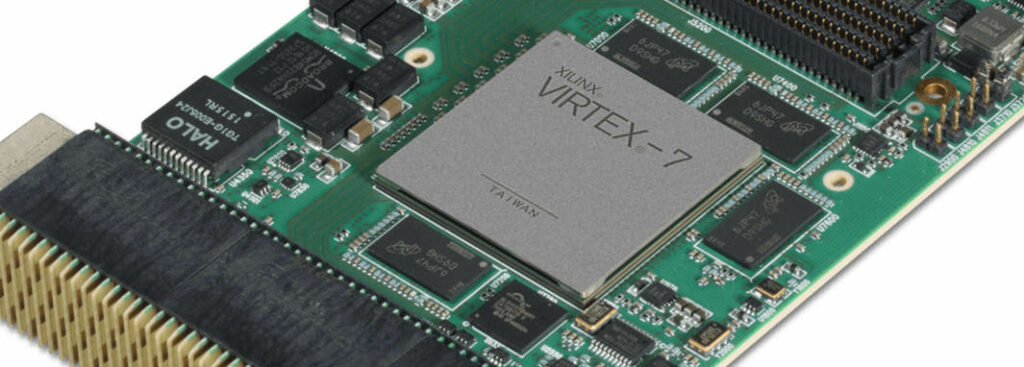Are you curious about what Xilinx FPGA PCIe is? You’re not alone! Given the flexibility, scalability and performance offered by Field Programmable Gate Arrays (FPGAs) combined with their latest advancements in Peripheral Component Interconnect Express (PCIe) technology, this type of hardware is becoming increasingly popular among developers. In this blog post, we’ll go over some basic information on Xilinx FPGA PCIe to help you better understand why they are being used more and more frequently in modern computing applications.
Overview of Xilinx FPGA and PCIe Technology
Xilinx FPGA and PCIe technology are two of the most popular solutions for high-performance computing, offering unparalleled speed and flexibility. Xilinx FPGA chips are reconfigurable hardware devices that can be programmed to perform a wide range of tasks, from signal processing to artificial intelligence. These chips are highly versatile and widely used in many industries, including aerospace, defense, and telecommunications. PCIe, on the other hand, is a high-speed serial interface that connects different devices within a computer system. It is commonly used to connect graphics cards, network cards, and storage devices to the motherboard. The combination of Xilinx FPGA and PCIe technology allows for powerful and flexible computing solutions, making it an excellent choice for businesses and individuals looking for high-performance computing.
Benefits of Using Xilinx FPGA and PCIe in Your System

Xilinx FPGA and PCIe can offer numerous benefits when implemented in your system. These components are particularly advantageous in environments that require high-speed data processing, low latency, and reliable performance. FPGA allows for faster processing of complex algorithms than traditional processors, while PCIe facilitates high-speed data transfers between devices. The result is a system that provides improved performance, scalability, and efficiency. Additionally, Xilinx FPGA and PCIe offer high flexibility and customization options, allowing for tailored solutions to meet specific business needs. In summary, incorporating Xilinx FPGA and PCIe into your system can bring significant advantages in terms of processing speed, data transfer, reliability, scalability, and customization.
Understanding the Terminology Used with Xilinx FPGA and PCIe
If you’re new to the world of Xilinx FPGA and PCIe, the terminology can be overwhelming. From terms like “bitstream” and “design constraints file” to “Vivado” and “UltraScale architecture,” it’s easy to feel lost in a sea of jargon. But don’t worry, understanding the vocabulary is key to unlocking the full potential of Xilinx hardware. By taking the time to learn the language, you can gain a deeper understanding of how FPGA and PCIe technology works and be well-positioned to design and program powerful systems. So, roll up your sleeves, grab a cup of coffee, and get ready for some exciting new vocabulary!
Exploring Popular Projects That Use Xilinx FPGA and PCIe Technology
Xilinx FPGA and PCIe technology have revolutionized the world of computing, enabling fast and efficient processing of complex data. There are several popular projects that have leveraged these technologies to create groundbreaking solutions. From high-speed trading to deep learning, Xilinx FPGA and PCIe have been instrumental in accelerating data processing and delivering accurate results. Some of the other notable applications include image and video processing, signal processing, and cloud computing. With constant advances in technology, we can expect even more innovative projects and applications to emerge that harness the power of Xilinx FPGA and PCIe.
Different Types of Solutions Available When Using Xilinx FPGA and PCIe
When it comes to working with Xilinx FPGA and PCIe, there are a variety of solutions available to meet different needs. One option is to use a PCIe Endpoint Block for implementing PCIe endpoint designs, while another is to utilize the Virtex UltraScale+ PCIe Gen4 Platform. Additionally, there are UltraFast Design Methodologies available for creating high-performance designs, as well as Vivado Design Suite for managing the entire design process. With so many solutions to choose from, developers can tailor their approach to fit the requirements of their specific project. Ultimately, whether it’s through hardware or software, utilizing Xilinx FPGA and PCIe allows for a powerful and flexible development process.
Advantages of Implementing Xilinx FPGA and PCIe in Your System
In today’s fast-paced technological world, it’s essential for businesses to have a system that can keep up with their demands. If you’re looking to design an efficient and cost-effective solution for your business, integrating Xilinx FPGA and PCIe can be a game-changer. By implementing these technologies in your system, you’ll achieve high-speed data transfer rates, improved performance, lower latency, and increased reliability. These advanced features allow for faster decision-making, seamless communication between devices, and overall better productivity. Plus, with the flexibility and scalability that come with FPGA and PCIe, adapting to new technologies and business requirements is a breeze. So, if you want to stay ahead of the competition, reduce costs, and improve the efficiency of your operations, investing in Xilinx FPGA and PCIe technology is the way to go.
Overall, Xilinx FPGA and PCIe are popular options for designing advanced systems. From the various advantages associated with their implementation to the different types of solutions available, it’s easy to see why so many choose to implement them in their projects. With a deeper understanding of this technology and an insight into the numerous benefits that can be availed by its use, deciding whether or not to incorporate Xilinx FPGA and PCIe into your design is made easier. The familiarisation with these technologies can help in determining the best course of action when dealing with complex system design projects. When considering how implementable and flexible Xilinx FPGA and PCIe products are, it’s clear that their use should be seriously considered for your design requirements.

